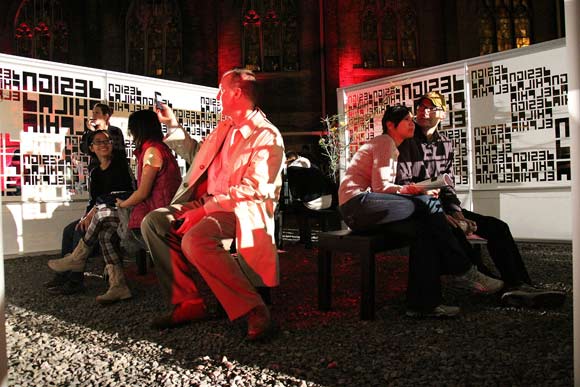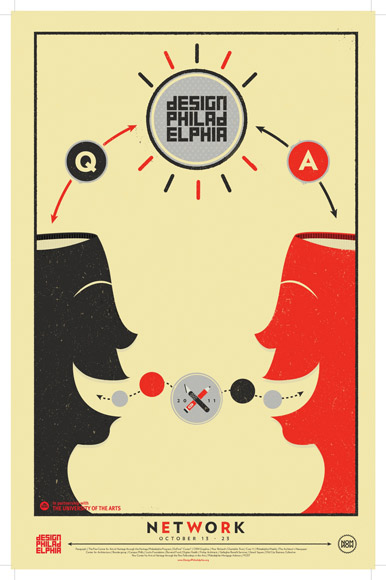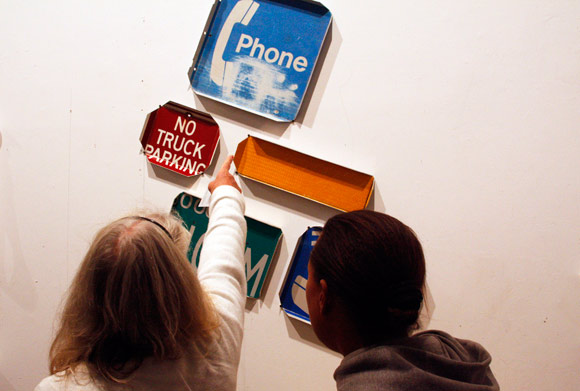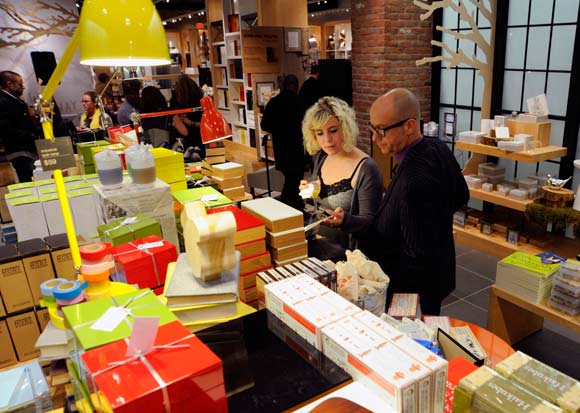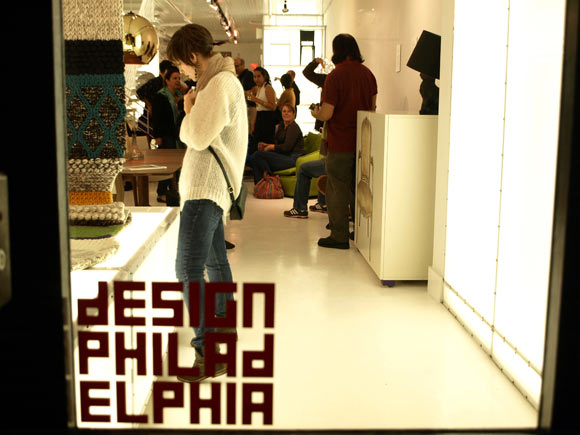Its industrial-strength, big-manufacturing economy is long gone, and Philadelphia, like many cities, is embracing Richard Florida's much-vaunted “creative class” as a key to growth. But no other American city struts its creative stuff with more vigor than during the upcoming gt;DesignPhiladelphia.
For 11 days (October 13-23), DesignPhiladelphia propels design — in its many disciplines — to the forefront, with more than 150, mostly-free public events: movie viewings, runway shows, book signings, workshops, demonstrations, open houses, exhibitions and parties.
Hilary Jay, DesignPhiladelphia's founding director, views the event, believed to be the largest such showcase in the country, as more than a festival in celebration of creativity and innovation. “DesignPhiladelphia,” she says, “is a brand agency and an advocate for Philadelphia.”
A self-described “design evangelist,” Jay views design as the city's and country's economic savior.
“Design is the thread that runs through everything,” she says. “Road systems are designed, bike paths are designed, T-shirts are designed, computer chips are designed. Your cereal box is designed. There is nothing that is not designed as far as I'm concerned. I think it is important to get that message out there because design is going to save America. If you look at Apple, you can see how design and innovation are handmaidens to pushing America into a trajectory towards economic strength.”
No one has quantified the economic impact of DesignPhiladelphia, and the city plays no role in funding. But the Nutter administration is enthusiastic about DesignPhiladelphia. “It's an extraordinary asset, a fantastic way to connect the dots and to showcase (the city's design excellence) to the public,” Gary Steuer, the city's chief cultural officer, has said.
Sean Buffington, president of the University of the Arts, DesignPhiladelphia's partner, says the event focuses “national attention on the city as a rapidly-growing center of design innovation and excellence” and is a step toward developing “a creative economy powerhouse.”
Marianne Bernstein is an independent curator who has participated in DesignPhiladelphia (and does again this year). She sees the event as especially valuable during an economic downtown. “Cities are waking up to the fact that design is not only essential to healthy community — it may even save our cities. It's not just a beautiful commodity. At best, it's a flexible, engaging process that gives form to fresh ideas, which in turn creates something new. And that in turn creates excitement, new energy and positive change.”
For its participants, she adds, DesignPhiladelphia as a ticket to innovation. “Designers (often artists who need to make a living) are big thinkers and dreamers and often do not get enough opportunities to experiment,” she says. “Instead, like most adults, they are restricted by the demands of life: keeping a business going, pleasing clients or just keeping their heads above water. DesignPhiladelphia offers a rare opportunity for this dynamic community to energize themselves and their city — to step up to the plate, take a risk, dialogue and exchange ideas.”
DesignPhiladelphia debuted in 2005 after Jay, then director of the Design Center at Philadelphia University, in collaboration with Jamer Hunt, an industrial designer then with UArts and design writer Joseph Dennis Kelly II, hatched the idea of a cooperative symposium for the city's seven higher-ed schools with design programs.
Now produced in partnership with UArts, DesignPhiladelphia still celebrates the many aspects of design work underway in the city: architecture, fashion, graphics, industrial and product design, urban planning, textiles, furniture, videography, photography, jewelry, interiors, multi-media and on. (The common denominator says Jay, is that all are in some way an expression of the applied arts — works that are purely fine arts would not make the cut, although sometimes the line is blurred.) Jay's next step, she says, is to “brand” DesignPhiladelphia as an continuing presence with year-round events.
This year's DesignPhiladelphia (“hundreds of designers, thousands of inspirations”) includes several ongoing events along with talks by design luminaries, hands-on workshops, street happenings and much more.
Not surprisingly, much of the audience for DesignPhiladelphia, Jay observes, comes from the arts and design communities. But engaging the general public is the hidden payoff. “I love it when people who are innocent bystanders in business suits on their way to lunch see people with a four-foot crayon made out of chalk, chalking sidewalks,” she says. “This is design at play at its best.”
Just a small sampling of the highlights includes:
BetterBlocks Philly (Oct. 13-23, between 17th, 18th, Christian and Catherine)
A collaboration among residents, the South of South Neighborhood Association (SOSNA) and designers to create a safe pedestrian environment, complete with performances, art and design exhibitions, vendors and pop-up shops.
Alexis Bittar — Cocktails + Conversation (Oct. 14, Scarlett Alley, 241 Race St.)
A chance to schmooze with the renowned jewelry designer.
Dialogues on Design (October 14-20, Center for Architecture, 1218 Arch St.)
Talks by heavy hitters including product designer Jaime Salm and Knoll executive Benjamin Pardo.
Mad Men Chic: Molecules on Madison Ave. (October 17, Chemical Heritage Foundation, 315 Chestnut St.)
Design historian Regina Lee Blaszczyk explores the relationship between chemistry and interior design in the Mad Men era.
Big Chalkers (Oct. 18, 16th and the Parkway)
Passers-by are encouraged to get in touch with their inner four-year-olds with four-foot crayons and a large plaza ready for sidewalk coloring.
Not a Vacant Lot (Oct. 19-23, 313 S. Broad St.) This long-vacant lot, despite its high visibility Center City location, is typical of Philadelphia's pervasive vacant-land problem. For five days, the lot becomes a showcase of cutting-edge, temporary programing including live performances and video showings.
Gray Area: Provocations on the Future of Preservation (October 19, Center for Architecture, 1218 Arch St.)
Big name thinkers including architects Tod Williams and Enrique Norten discuss how to marry contemporary design, sustainability and other pressing demands with the historic city, along with the launch of a free, limited-edition print companion catalog.
Project the Peace (October 20-22, 333 S. Broad St.)
Outdoor projections produced by 25 Bartram High School students.
ELISE VIDER is a writer, editor, observer and advocate for economic development and design excellence in Philadelphia, her adopted hometown, and (full disclosure) project manager for DesignPhiladelphia's Gray Area event. Send feedback here.
All photographs courtesy of DESIGN PHILADELPHIA

